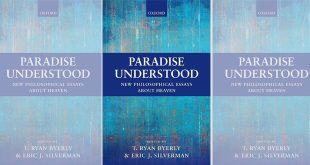This resource provides an overview of marriage and divorce among American Muslims for judges, lawyers, advocates, social service providers, imams, community leaders, and community members.
The guide explores issues of Islamic and U.S. family laws as they relate to religious and cultural practices of American Muslim couples and families. There is a significant distinction between Islam as a faith and the varied cultures of individual Muslims, yet faith-based marital solemnization is a common practice, much the same as it is for most Americans. Most couples with Islamic marriage contracts intersect with the U.S. legal system when they register for a civil marriage license, and for some, in the event of divorce when they present the contract to an American court for enforcement. As it is at this intersection that potential issues and barriers may arise due to lack of understanding between the court and parties to the contract, this resource aims to smooth the process by bridging the informational gap. Through better understanding, legal practitioners can help to protect the civil rights of Muslims and all Americans, and Muslim communities can support couples by ensuring their marital rights are preserved.
This guide was also developed with the goal of helping American Muslims navigate the complex American legal system, and to assist helping professionals in understanding their Muslim neighbors, the issues they may face in their homes, and the types of support they may need. As advocates working in the field of domestic violence, the collaborating organizations that produced this resource often encounter survivors of abuse with issues related to their Islamic marriage contracts – both civil and religious. Although most American Muslim couples are often unaware of the importance the Islamic marriage contract may hold for them in the event of a divorce, the inclusion of key stipulations can help to supply protective financial and religious measures. It is our hope that careful consideration will be given by American Muslim couples, families, and communities to every Islamic marriage contract that is drawn up, and the accompanying protective stipulations that can be added.
Legal professionals and advocates with limited knowledge of Islam and Muslim culture will learn more about traditional Islamic family law, common cultural practices, trends in abuse, and potential issues at hand when Islamic marriage contracts are presented for enforcement. Muslim community leaders and members will gain a better understanding of U.S. family law on marriage and divorce, and the challenges divorcees may face in civil court. A sample Islamic marriage contract is included along with supporting clauses that can help to protect women’s rights, as well as additional stipulations that may be considered. The main content of the guide ends with specific recommendations that are provided for legal professionals, advocates, imams and community leaders, and community members respectively.
The guide concludes with resources that include relevant case law, expert witnesses, Islamic scholars, a glossary, Muslim legal organizations, publications, premarital questions, and relevant Qur’anic verses.
The author would like to note that this resource is by no means meant to encompass the full theological and legal scope of marriage and divorce in the American Muslim experience.
Indeed, the author looks forward to contributions to the field by scholars of Islamic theology and law, and anticipates revisions of this resource will be necessary to address future research, landmark cases, emerging dilemmas, and new issues arising from discussion among providers and communities.
 Ijtihad Network Being Wise and Faithful Muslim in the Contemporary World
Ijtihad Network Being Wise and Faithful Muslim in the Contemporary World
